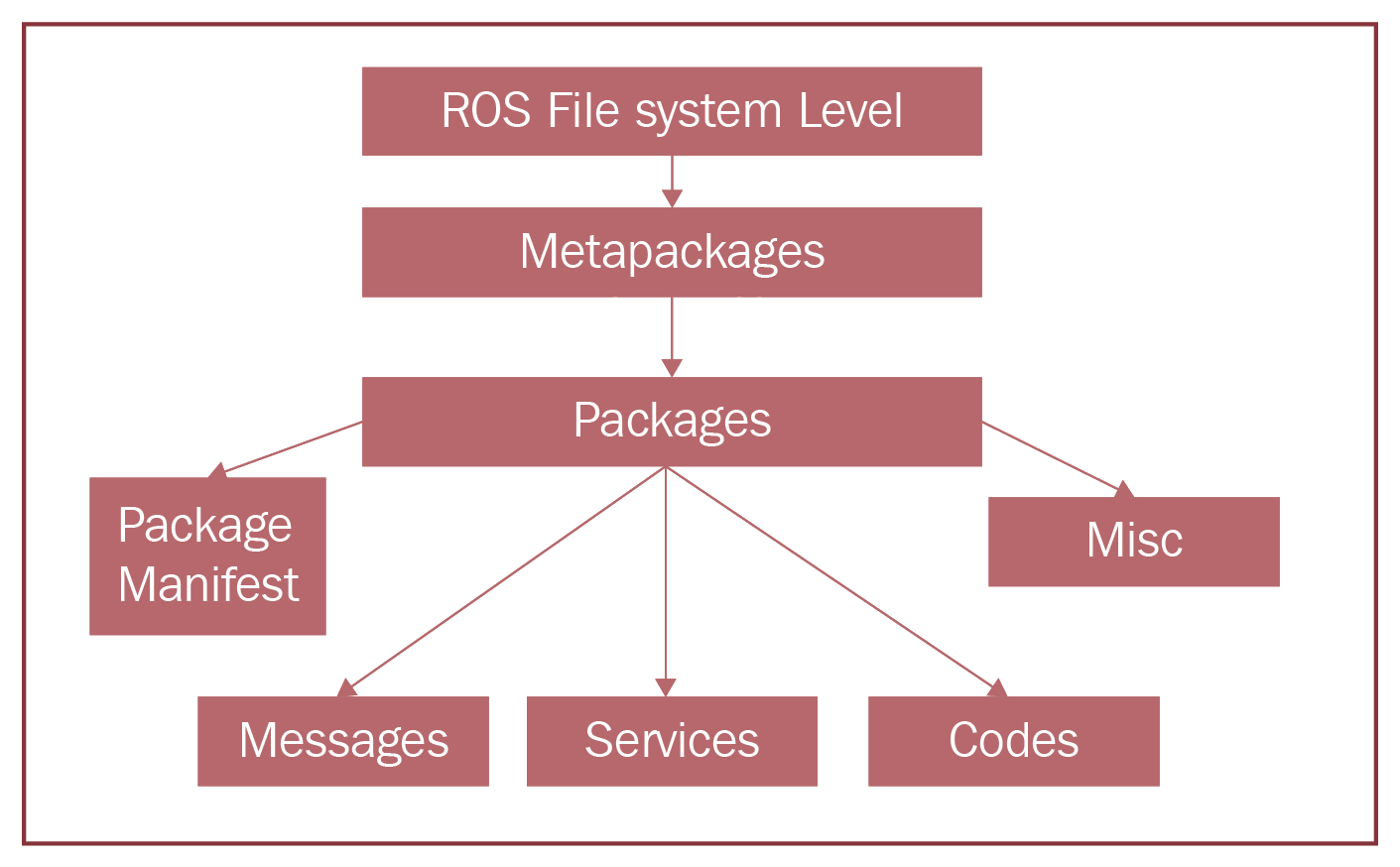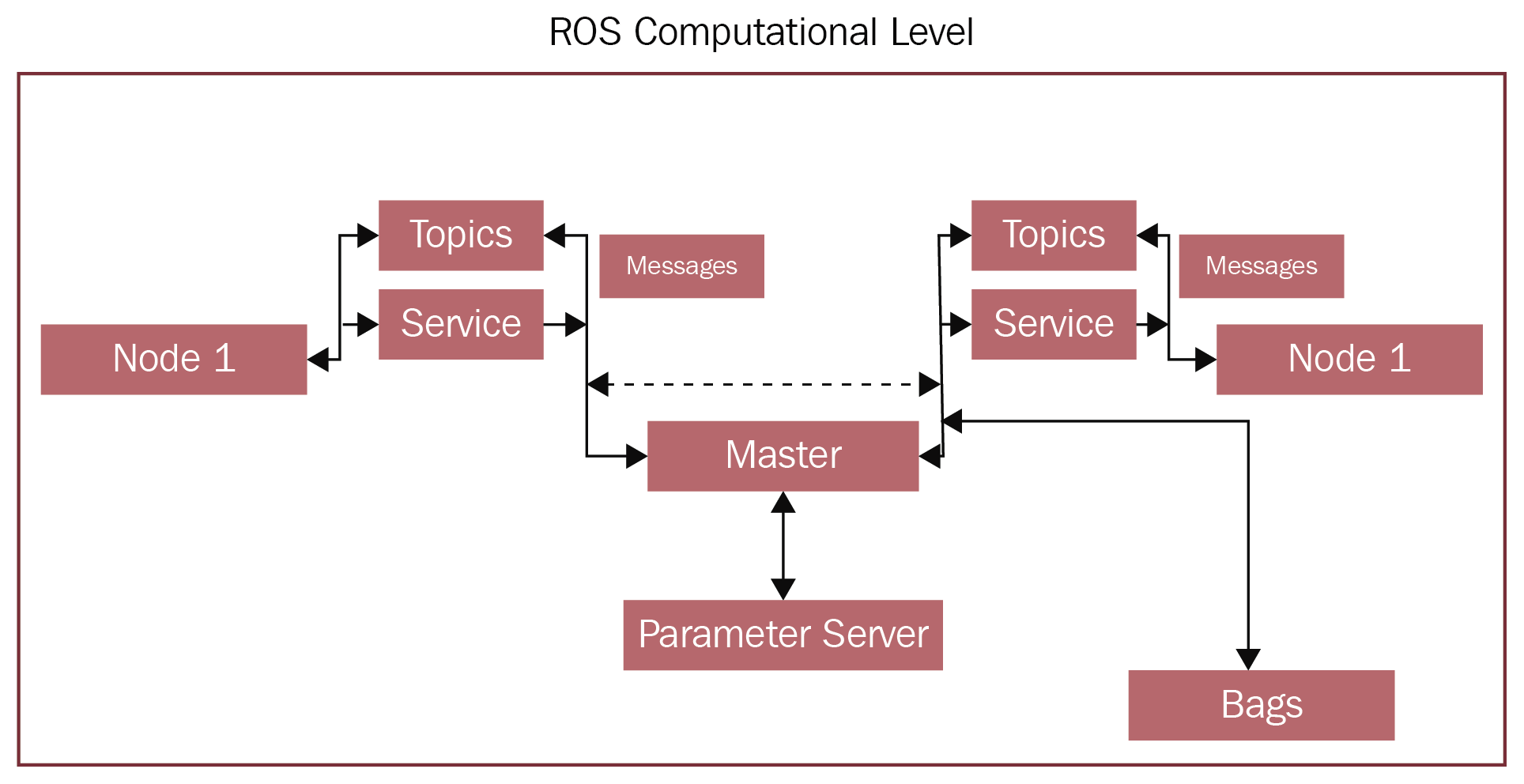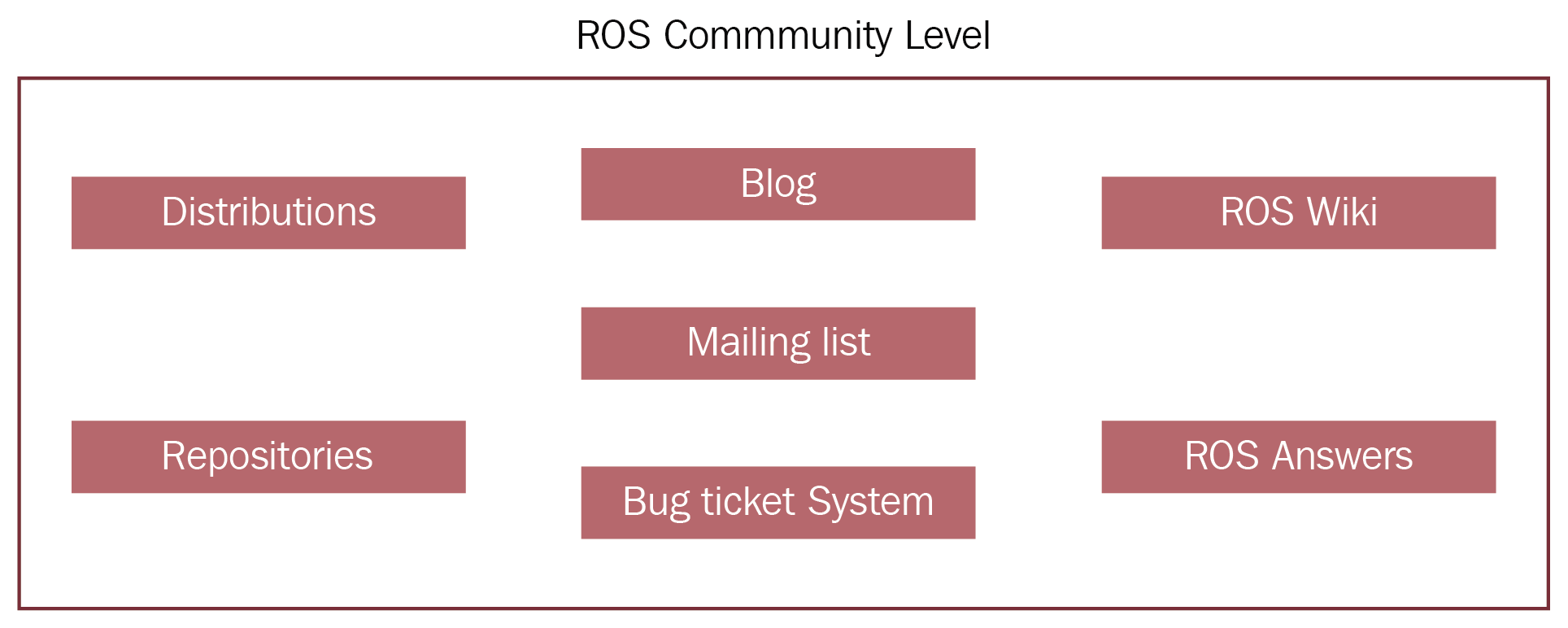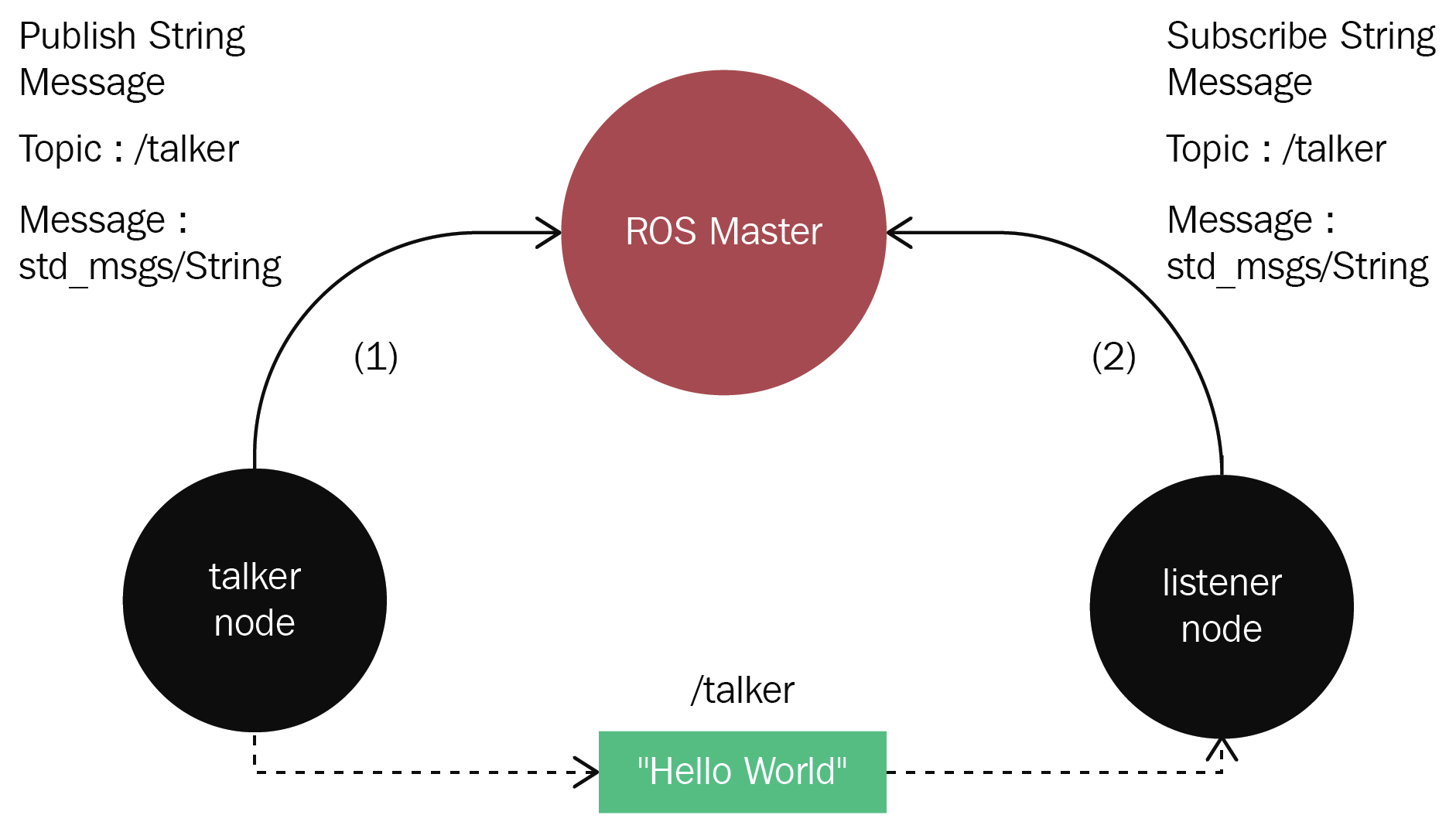Understanding the basic working of ROS and its terminology can help you understand existing ROS applications and build your own. This section will teach you important concepts that we are going to use in the upcoming chapters. If you find that a topic is missing in this chapter, then rest assured that it will be covered in a corresponding chapter later.
There are three different concepts in ROS. Let's take a look at them.






































































